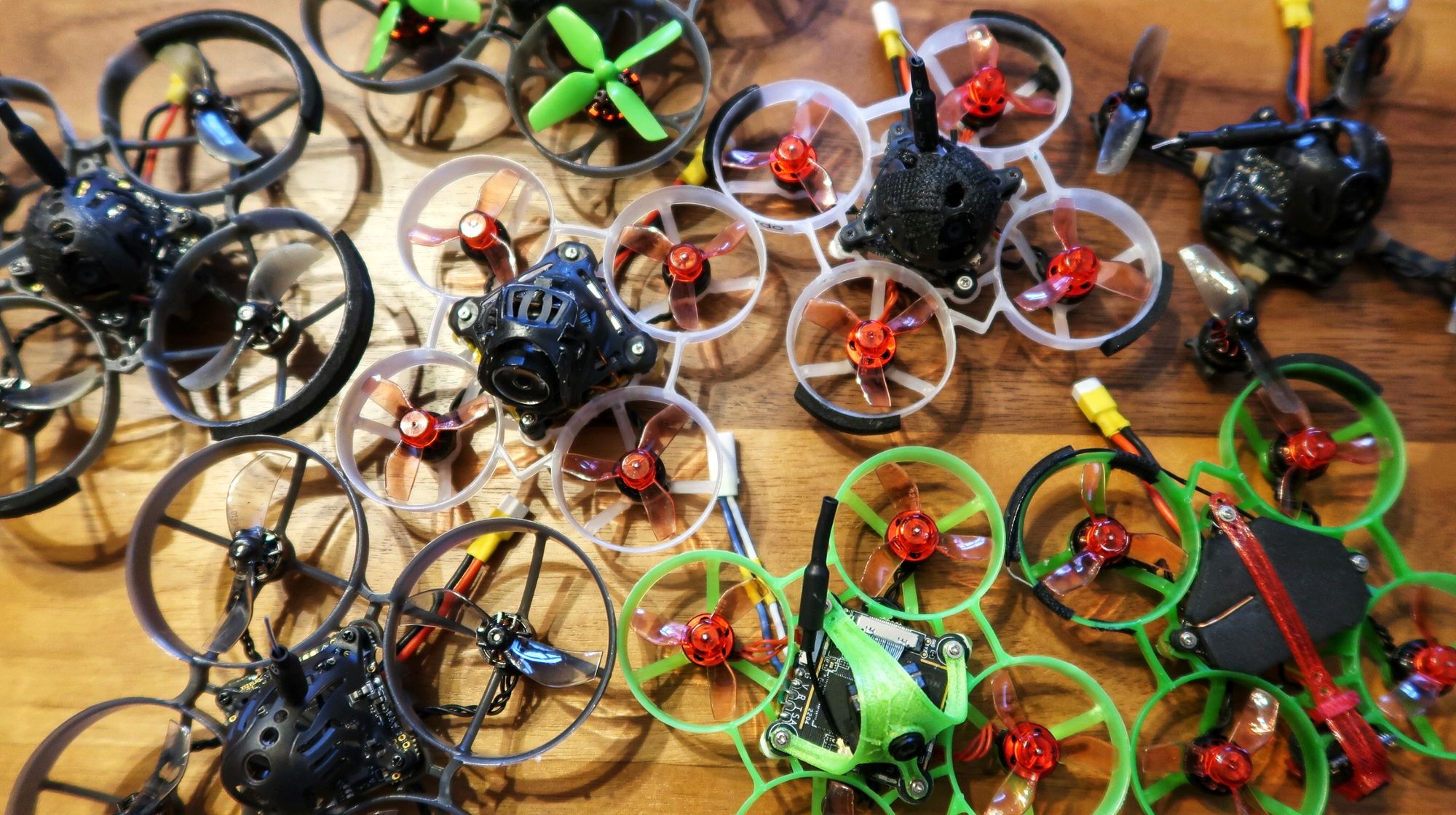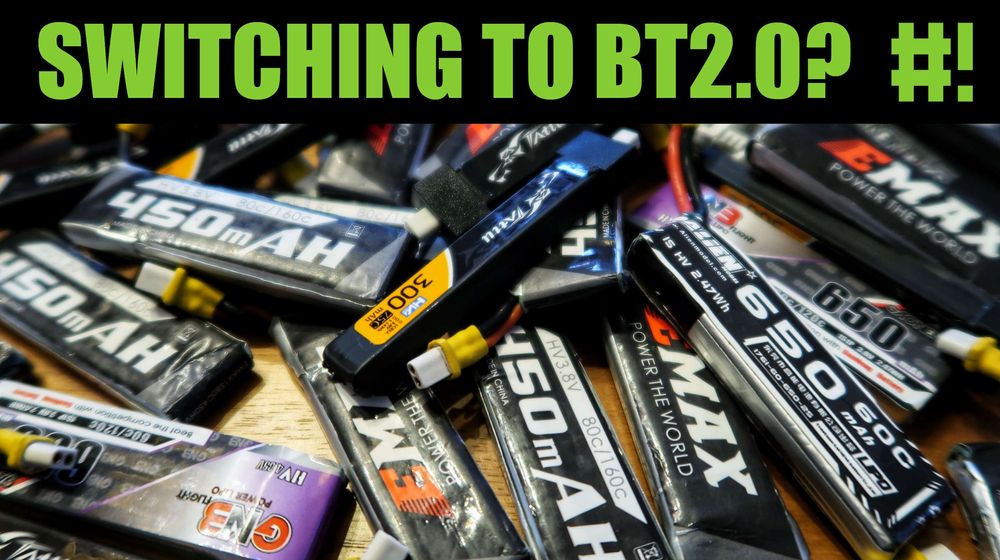I'm switching to BT2.0 Tiny Whoop Battery Connectors
Synopsis
This year, I decided to take part in the 4th annual International Game of Whoop. Since I started making videos for IGOW, I have noticed many things about my equipment, whoops, and style of flying that weren't apparent before. I fly my tiny whoops fairly often around the house. On average, I fly, give or take, 10–15 packs a week. Over the years, I have committed many tricks to muscle memory and can execute them with a high success rate. IGOW has, however, forced me out of my comfort zone. I find myself practicing tricks and combinations I would usually not put together or even attempt with a tiny whoop.
Case in point: the IGOW challenge for week three was to dive tall buildings. Doing a dive with a tiny whoop is something that normally wouldn't cross my mind. I almost always fly them inside and stay close. "Juicy flicks" are also something I would normally reserve for a heavier quad, or at least as heavy or heavier than a toothpick. This is due to the lack of "throw" weight. Tiny whoops are light and don't handle anywhere near a larger quad. However, in my course of doing IGOW, I have found that these tricks are not only possible but can be executed with finesse and style. The stick movements are very different from those of a heavier quad. In order to successfully land a trick, you have to take wind, speed, motor KV and the voltage sag of your batteries into account. The combination of these factors heavily influences your stick movements and flying style.
My muscle memory is more attuned to heavier quads. With that said, bridging the gap between these differing drone classes and making our piloting skills translate better to lighter quads is the goal of this article. Let's focus on one of the main differences that causes most pilots to have to develop completely different piloting styles depending on the class of drone: Let's talk about voltage sag and how to minimize it.
Connectors!
Of course, there are other factors that cause voltage sag. Internal resistance in old batteries or a misconfigured flight controller. However, one of the biggest causes is insufficient conductivity from your battery to your flight controller. The main culprit behind this bottleneck, has to do with the type of battery connector you are using. For tiny whoops, this is commonly the PH2.0 connector.
PH2.0
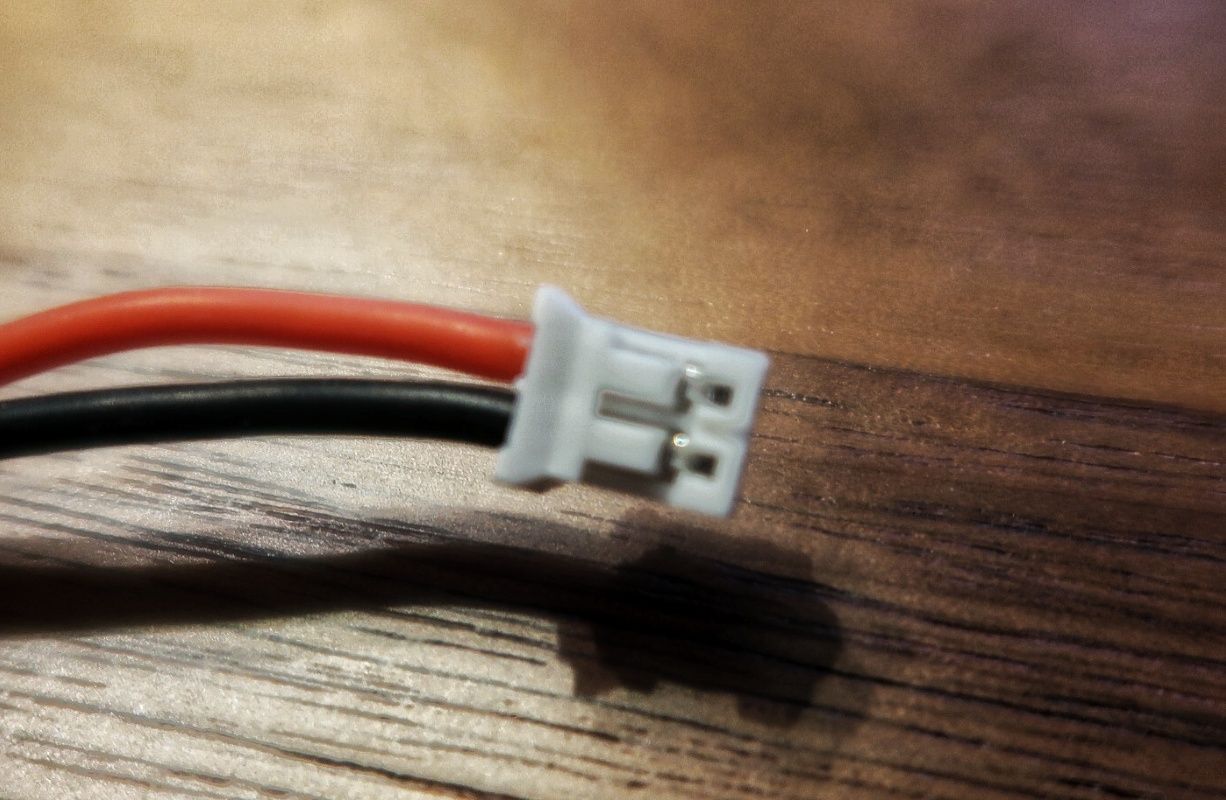
The PH2.0 connector has its pros and cons. Why not stick with the PH2.0 connector? Here are some of my reasons.
PH2.0 Pros
- The PH2.0 is omnipresent. Your traditional BNF tiny whoop will normally sport a PH2.0 connector by default.
- PH2.0 connectors are cheap. For approximately 20 dollars, you can pick up a pack of PH2.0 connectors and a crimper.
- The connector is very lightweight.
PH2.0 Cons
The real drawback to the PH2.0 connector is the problem of voltage sag. The humble PH2.0 connector is a bottleneck in delivering enough electrons to your power-hungry brushless motors due to the thin nature of the connecting pins. Depending on your flying style, it can cause a lack of energy delivery from your battery when you need it most. The connector increases the amount of resistance, thereby leading to less efficient battery performance and shorter flight times.
BT2.0
I am usually not a fan of proprietary-style connectors; however, I think BetaFPV's BT2.0 checks all the boxes. Here's why:
BT2.0 Pros
- Less voltage sag. There is more conductive material in the connector, which alleviates the voltage sag problem of the PH2.0. This gives the battery a performance boost. More performance means more fun and longer flights.
- Lightweight
BT2.0 Cons
- The connector is proprietary and sometimes hard to get. As far as I know (and I could be wrong), the BT2.0 is exclusively made by BetaFPV. This means that there is no regulating board behind making this connector an industry standard. This means it could disappear just as soon as it arrives. A consequence is that after you have converted you entire fleet of drones and batteries to BT2.0, BetaFPV could tank, making the connector impossible to find. I think this is unlikely, but it is not impossible. We could hoard them and make our fleet future-proof. Is 3D printing a possible solution to this problem?
- BT2.0 connectors are more expensive. We all know that FPV as a hobby is not cheap. The extra price adds another expense to an already expensive hobby. At the time of writing this article, BT2.0 connectors were significantly more expensive compared to PH2.0. Maybe this will change in the future.
Why am I Switching?
The answer to this is simple. I want to challenge my abilities as an FPV tiny whoop pilot. I think I have reached the limit of what the PH2.0 connector can offer in terms of performance. This small but extra boost in performance means the difference between pulling out of an inertia-laden power loop or being able to add more finesse to various power-hungry tricks.
Migration
I have completely migrated my tiny whoop setup. This includes all my tiny whoops and tiny whoop 1S batteries.
Batteries
Starting off, I replaced most of my old batteries with new ones. Since my batteries aren't as spry as they used to be. I ordered some brand new Tattu 1S 300maH batteries. Luckily, these batteries already come with BT2.0 connectors preinstalled. All other preexisting batteries, that still had some spark left, were replaced with BT2.0 connectors. This took a bit of time. However, after breaking out my soldering iron, flux, and headphones, I was finished in the time it took me to listen to the entire album Solipsist by The Zenith Passage four times.
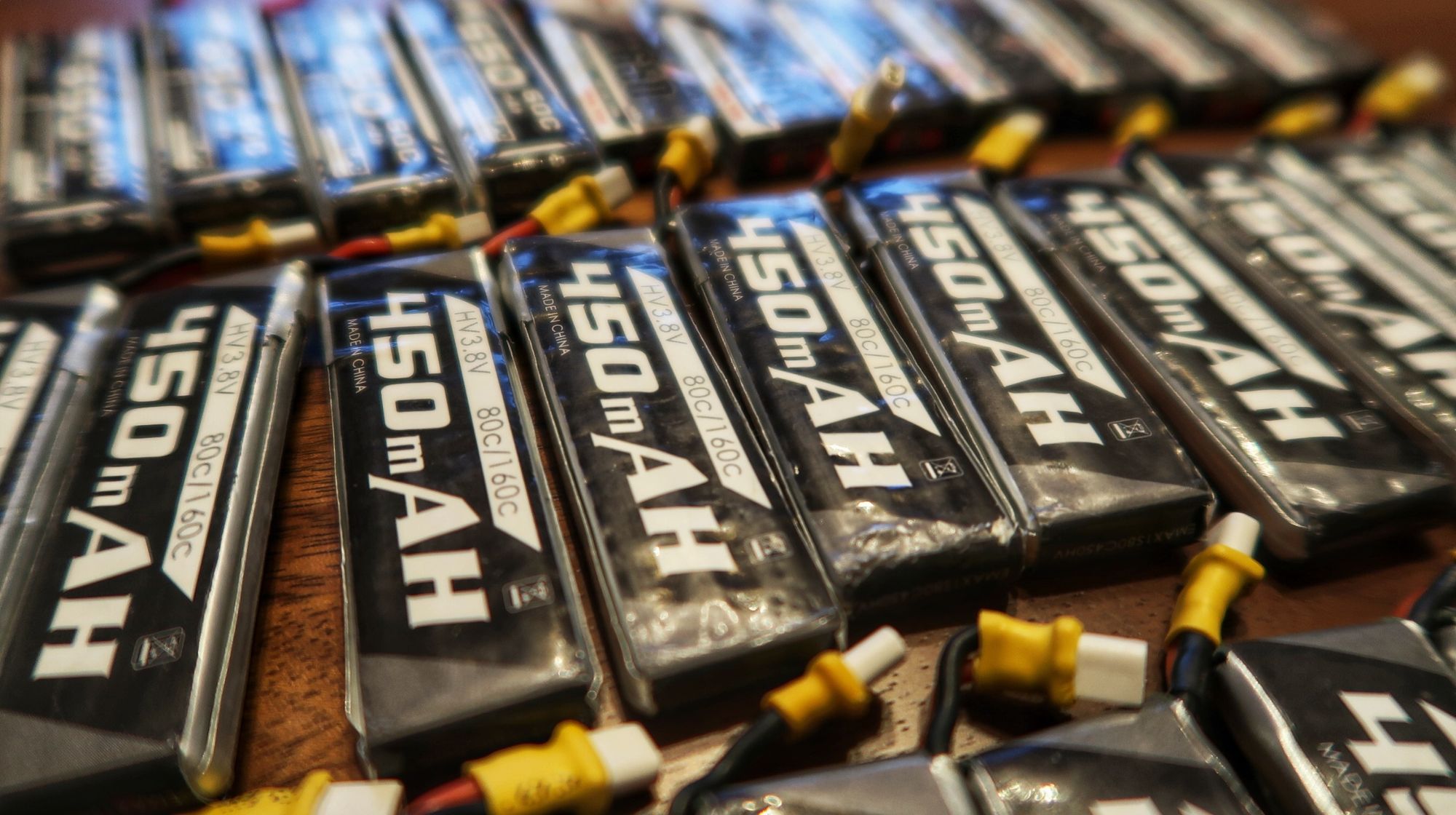
Drones
The connectors on each whoop were replaced with BT2.0 connectors. This took about an hour and half to complete.
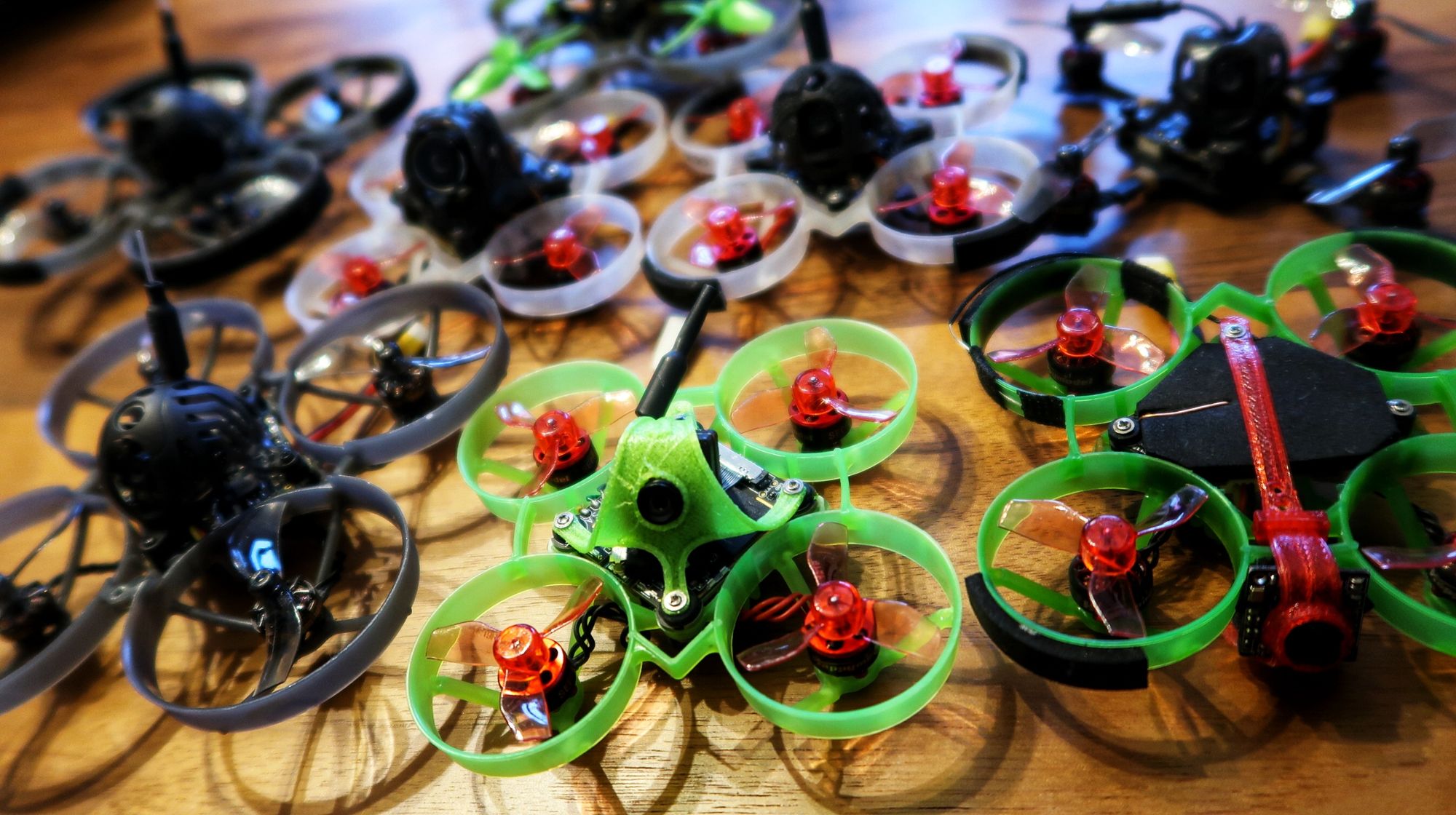
Performance
Since the changeover, the performance of each drone has been significantly better. I can fly longer and still squeeze out more power and flight performance towards the end, when the battery voltage starts to wane. With BT2.0, voltage sag is minimal. This is noticeable when flying longer. When using PH2.0 connectors, it was usually okay to fly my battery voltage down to ca. 3.0 volts. After disarming, the voltage would usually rise back up to approximately 3.5 volts (the discharged voltage I prefer after a flight). With BT2.0 connectors, the difference is usually between 0.1V and 0.2V from the voltage in the OSD to a few seconds after I disarm. For example, if I want the battery to have an ending voltage of 3.5 volts, I will disarm it somewhere around the 3.3 or 3.4 volt mark. Compared to my old method of flying, I need to avoid flying my batteries down past 3.3V. In order to make this easier to keep track of, I have increased the OSD battery warning voltage configuration to 3.3 volts in Betaflight. The only exception to this rule is the OSD battery warning for my HD-Zero whoops. These are set to 3.2 volts because the power draw of the VTX is higher and causes more voltage sag.
Final Thoughts
Go get yourself some new BT2.0 connectors! You will have more punch and performance, which ultimately equates to more fun. After flying around for a bit and polishing your chops, sign up for the next season of IGOW. It will challenge your skills as a pilot and up your tiny whoop game. It definitely did for me.
